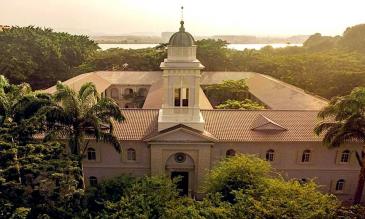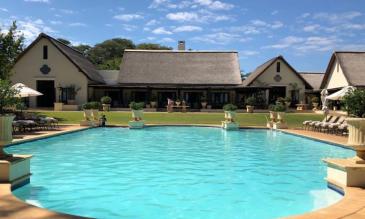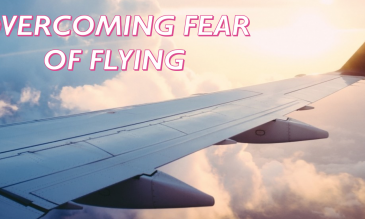- On the 16th of November, 1920, Qantas is founded by Paul McGuiness, Hudson Fysh, Fergus McMaster and Arthur Baird in Winton, Queensland. Back then, its name was Queensland and Northern Territory Aerial Services Limited.
- During its first few years, the airline operated air mail services subsidised by the Australian government, connecting railheads in western Queensland, using a fleet whose first aircraft was an Avro 504K purchased for £1425.
- After building 8 aircraft under license in its Longreach hangar between 1926 and 1928 (7 de Havilland DH.50s and a single DH.9), Qantas made the inaugural flight of the Royal Flying Doctor Service of Australia, departing from Cloncurry with a chartered aircraft.
- In early 1935, Qantas introduced flights to Singapore, using the de Havilland Express.
- In June, 1938, two Shorts S.23 Empire flying boats join the fleet, and the first flight attendant of the airline gets employed. These two flying boats will operate until 1944.
- Around the same period, Qantas moves its headquarters to Sydney.
- Between 1939 and 1947, the airline struggled to continue its operations, as enemy action and accidents destroyed half of its fleet, after being taken over by the Australian government for war service.
- In 1947, Lockheed L.049 Constellations were added to the fleet and, five years later, Qantas crossed the Indian Ocean to Johannesburg via Perth, Cocos Islands and Mauritius, calling this the Wallaby Route.
- In 1956, Qantas ordered the Boeing 707 jet, preparing its entry into the jet age.
- In 1958, Qantas became a round-the-world-airline, flying from Australia to London via Asia and the Middle East (the Kangaroo Route) and via the Southern Cross route (flights to Vancouver via Auckland, Nadi, Honolulu and San Francisco), using Super Constellations.
- One year later, the Lockheed Electra joined the fleet, as well as the Boeing 707, and in early September, 1959, Qantas becomes the third airline to fly jets across the Atlantic, after BOAC and Pan Am.
- In 1965, Qantas introduces its first TV ads and, one year later, the Fiesta route opens – Sydney to London via Tahiti, Mexico City, and Bermuda.
- In 1971, the Boeing 747-238Bs joined the fleet, being introduced on the Kangaroo Route.
- In 1974, after Darwin was devastated by Cyclone Tracy, Qantas established a world record for most people embarked on a single aircraft, evacuating 673 people on a single Boeing 747 flight.
- In 1979, the Boeing 707s were withdrawn from service, leaving Qantas the only airline in the world using a Boeing 747-exclusive fleet. In the same year, Qantas was the first airline in the world to introduce Business Class.
- In 1985, the Boeing 767-200 joined the fleet, operating on the New Zealand, Asia and Pacific routes.
- In 1989, a new world record was set – Qantas’ first Boeing 747-438 flies non-stop from London to Sydney – 18,001 kilometres in 20 hours, 9 minutes.
- In 1991, the Australian government announced its intention to sell 49% of Qantas, and full privatization occurs in 1995, when the shares of the airline are being traded for the first time on the Australian Stock Exchange.
- In 1998, Qantas co-founded the Oneworld alliance with American Airlines, Canadian Airlines, British Airways, and Cathay Pacific.
- In 2003, Qantas introduced its award winning Business Skybed.
- Two years later, Qantas celebrated 85 years.
- In 2007, the Qantas First Lounges open at Sydney and Melbourne, and the new Premium Economy Class is announced to arrive in early 2008.
- In late October, 2008, the Airbus A380 joins the Qantas fleet with a first flight from Melbourne to Los Angeles.
- In 2009, Qantas kept expanding its range of services by introducing International Online Check-In and Advance Seat Selection.
- In 2010, Qantas introduced the Next Generation Check-in and Q Bag Tag (a permanent tag that contains world first RFID technology allowing information of the passenger and flight details to be electronically imprinted) reducing domestic check-in times for customers.
- In 2011, Qantas expanded Next Generation Check-in technology across its regional network and launched the first stage of its international Faster, Smarter Check-in with new Q Card Readers for trans-Tasman frequent flyers.
- In 2012, a Commercial Agreement was signed to form the world’s leading airline partnership between Qantas and Emirates.
- In 2013, Dubai became the Qantas gateway to Europe, the Middle East and North Africa.
-
In 2014, Qantas was named the safest airline in the world by the aviation industry website AirlineRatings.com. The website lists Qantas, with a seven-star rating for safety and in-flight product, among the 10 airlines that it considers the safest.
-
In 2015, Qantas partnered with HBO to bring its customers hundreds of hours of the most popular TV shows programs. Each month, the HBO channel updates with 20 hours of the latest shows and movies.
- In August 2016, the Qantas Group announced a record result for the 2016 financial year, the best in its 95-year history, an underlying profit before tax of $1.53 billion, a 57 % improvement on the 2015 financial year.
- In 2016, Qantas reconfigured the Business Class cabin of all its 28 Airbus A330 aircraft, that was fitted with lie-flat seats with direct aisle access in a new 1-2-1 configuration. The Economy Class cabin was also fitted with a refreshed Recaro-designed economy seats.
- In 2017, Qantas received its first Boeing B787 Dreamliner. Configured with 236 seats across Business, Premium Economy and Economy Class, Qantasț Dreamliners have significantly fewer seats than many other airlines who have configured the aircraft to carry more than 300 passengers. The first Boeing B787 Dreamliner was used on some domestic routes before commencing long-haul operations, its first international service on the Melbourne – Los Angeles route starting December 15, 2017.
- On March 25, 2018, with the new Boeing B787 Dreamliners, Qantas became the first airline to ever connect Australia and Europe by a direct air link. The regular passenger Perth – London service is the first non-stop service on the Kangaroo Route that Qantas created in 1947 when the journey took four days and nine stops.
- In May 2018, Qantas ordered six more Boeing B787 9 aircraft that will replace the airline’s Boeing B747 400 aircraft by end 2020.
- In 2019, Qantas started the Airbus A380 refurbishment program that includes refurbished First Class suites, new Business Suites, new Premium Economy seats, almost 10% wider than the previous model, new Economy seat cushions, and improved inflight entertainment. The major cabin upgrade of 6 Superjumbos was done by the end of 2020, but Qantas’ post-COVID recovery plan foresees these aircraft will be idle for the near future and their return into operation by the end of 2023.
- On March 19, 2020, due to the COVID-19 pandemic, Qantas announced it would suspend all international flights and about 60% of domestic flights, ground more than 150 of its aircraft, and put two-thirds of its employees on leave.
- In the first half of FY 2021 (July-December 2020), which included Victoria’s extended lockdown, the strictest domestic travel restrictions since the pandemic began, and nationwide border closures, virtually all international flights and 70% of domestic flights stopped, but the Qantas Group managed to limit the 75% drop in revenue into a 1.03 billion AUD Underlying Loss Before Tax compared to a profit of 771 million AUD in the same period of the previous year.
- In May 2021, to help meet strong demand for domestic travel, Qantas added seven new domestic routes, offering 45 more routes than pre-COVID, and started operating more widebody aircraft with Business Suites, Boeing 787-9 Dreamliner and Airbus A330 200, between major capital cities.
- From October 31, 2021, Qantas is planning to resume flights to 22 of its 25 pre-COVID international destinations, including London, Singapore, Los Angeles, and Johannesburg. Initially, direct flights to New York, Santiago, and Osaka will not be resumed.
- Most of Qantas’ fatal incidents occurred before and during World War II. In the nine incidents (including an aircraft shot down) that took place between 1927 and 1945, 63 people died. After the war, two aircraft were lost, causing 17 victims, with the last accident occurring in 1951. No Qantas jets were involved in deadly incidents so far.

 En
En Es
Es Fr
Fr







